The LEGO Problem
If you have children between 5 and 15 in your life, it’s very likely that somewhere in a cupboard or on a shelf there is something that looks like this:
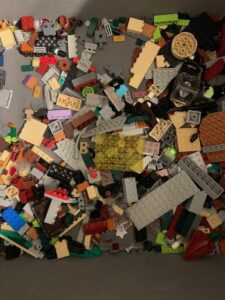 My seven-year-old granddaughter, who loves playing with LEGO blocks, recently requested a new LEGO set because “there’s nothing to play with at your house.”
My seven-year-old granddaughter, who loves playing with LEGO blocks, recently requested a new LEGO set because “there’s nothing to play with at your house.”
Grandma: “Couldn’t you just play with the LEGO kits you already have?”
Granddaughter: “They’re all gone.”
I doubted that my son, proud builder of a Millennium Falcon in the early 1980s, would throw away such expensive and treasured toys. When I asked him, he explained that someone – the housekeeper, the au pair, babysitter, etc. — no one was sure who — had apparently become frustrated with the many completed projects filling all the horizontal surfaces in the living room and disassembled them. He brought me a 13″ x 15″ bin labeled LEGO, filled with plastic pieces, the remains of over a dozen kits that had been lovingly pieced together, admired, then forgotten.
I tried to remember if anything in my own childhood or that of my children could provide a blueprint for how to handle this situation. My construction toys consisted of Tinker Toy, Lincoln Logs, and Erector sets. No help there, because once you built something, like a crane or a house or a bridge, you had used up most of the pieces in the set, and you had to take your project apart to build something else. Which I did, over and over and over. The difference here, it seemed to me, was that I had one set of parts and instructions for different ways to put them together. The way LEGO is marketed, each box contains only one project, and once you’ve built your pony stable or storm trooper vehicle, you appear to have exhausted the usefulness of the kit. Some children enjoy playing with their constructions, but this grandchild had never been very interested in doing so. But she did want to keep building. I wanted to find a way to renew her interest in the LEGO blocks she already had.
Reaching into the Past for a Solution
When I was about eight, I became interested in collecting bottle caps. At that time, children collected all kinds of things: coins, stamps, baseball cards, bubble gum cards, etc. I began asking my parents’ friends to save their bottle caps for me, and soon I had dozens of cups and bowls filled with caps from soft drinks and beer. I divided them into categories, such as creme sodas, root beers, cherry sodas, caps with cork liners, caps with pictures inside them. I traded with my friends, studied collections at local fairs, and my collection grew and grew. Soon my mother began to complain about the caps spilling out of the containers and onto the shelves in my bedroom, not to mention the ants (I suspect my terrarium, caterpillar farm, ant farm and microscope slides didn’t help the situation).
My father came to the rescue; he took several pieces of plywood and drilled shallow holes in each one, just the right size for a bottle cap. I then set my collection (washed free of ants) into the holes and labeled each category with an indelible pencil (the precursor of markers). The boards fit under my bed, and could be slipped out for my mother to vacuum, or for me to transport them to events.
Back to the LEGO Dilemma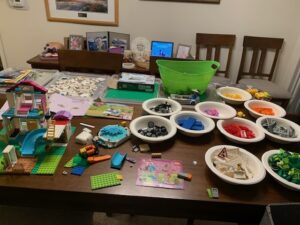
The next time I was at my son’s house, my granddaughter and I loaded the LEGO bin and three other boxes of disassembled projects into my car. Soon LEGO blocks and instruction booklets were covering my dining room table. As she worked from a LEGO Friends® instruction book, I sorted the pieces into paper bowls by color.
We worked together the rest of the day. I was impressed with the construction she made. She had begun by following the steps and matching the pictures of a house, but when she couldn’t find the exact piece the diagram called for, she had improvised. The result was stunning. She had built a one-of a kind structure, and decorated it in her unique style. I asked her if it was helpful to have the blocks sorted by color, and she said yes – would I please keep going and sort the entire collection?
TakeAway
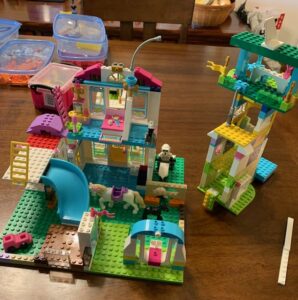 Over three long sessions together, my granddaughter created two complex constructions, and enjoyed explaining the various functions and purposes of individual parts to me. She also had rediscovered some of the LEGO manikins, including puppies, and began playing with them in the context of her LEGO world.
Over three long sessions together, my granddaughter created two complex constructions, and enjoyed explaining the various functions and purposes of individual parts to me. She also had rediscovered some of the LEGO manikins, including puppies, and began playing with them in the context of her LEGO world.
Intrigued by her newfound interest in these materials, I checked with Amazon.com to see if they still sold the LEGO Friends storybooks I remembered from when I was spending time with an older granddaughter in Santa Cruz. Unfortunately, they appeared to be out of print. What I did find, however, was a 2015 book published by DK titled LEGO Friends Build Your Own Adventure. I ordered it and we began an entirely new project – building some of the projects shown in the book with the materials we already had on hand. This required creativity and critical thinking, both characteristics that my granddaughter has in spades.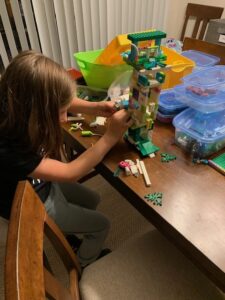
When she left my house after a recent three-day visit, she asked if she could keep her LEGO materials at my house. I couldn’t think of anything I would like more. I predict a summer of building and make-believe, stimulated by a different way of using these wonderful materials. Thinking out of the box can lead to amazing things.
Marlene Anne Bumgarner writes primarily about food, family, and traditions. Her 2020 memoir, Back to the Land in Silicon Valley, is about raising children, animals, and vegetables on a rural plot of land in the 1970s. Organic Cooking for (not-so-organic) Families will be out soon. Marlene is currently writing a cozy mystery.
Share this post
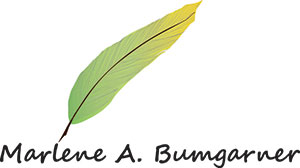

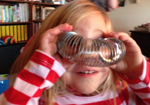

I just read your remarks about modern Lego kits— like this complex and beautiful one my son and granddaughter did at my house—and left here “ because we don’t have room for it at home.” And I do???? // These one-time-use kits are so different from the old-style do-it-yourself ones. So I am going to try your idea of sorting pieces by color (maybe not brave enough to take this one apart!) and challenging Dancer to create something new.
Those dragons are really lovely! Let me know how it goes with your family and new creations!
Love your solution!! I believe kits are a good tool, but like so many other things, they can become a crutch, if you will, which can eventually inhibit imagination. A perfect example is seeing your granddaughter go from not having anything to play with because everything was dismantled to realizing she could make amazing creations using a bit of general instruction and her own imagination. How freeing that must be to her 7-year-old mind. Several containers of color-forted pieces had to much less intimidating than everything jumbled together!
Love her creations!!!
Thanks for your thoughts, Barbara. And she’s still at it. When I attempted to move her creations to my sideboard, the tower crumbled into several smaller pieces, with many individual pieces on the floor. I was worried that she’d be angry with me, but instead said “It’s already fallen down several times. I need to make the foundation more stable. Foundation more stablez? Where did she even learn those words. She took out a big green square base and started over, and now the tower is a large square with small buildings inside it.
Great post, Marlene! I love LEGOs. I have several sets and am working on the Harry Potter Diagon Alley now. I tried screws boxes to sort my bricks, sorting by color and size. The instructional design of the instructions is top-notch. I’m touched by the love that comes across in your post.
I thought about hardware boxes, but many of the pieces we have are too large for the drawers. LEGO.com sells sorting boxes, but they are very expensive. Our approach is working well so far. I agree that the instructional deign of the instructions is good. Also, both my 13 year old granddaughter in Santa Cruz and my 7 year old granddaughter down here were given subscriptions to Kiwi Crate for their 5th birthdays – every month they receive an age-linked kit to put together that demonstrates some scientific or mathematical concept and is fun to play with — both girls got excellent practice following directions and putting the projects together. I highly recommend it as a gift to any children in your extended family, especially girls.
Love this and the mighty builder spirit your granddaughter possesses. Love the imaginative designs, too. Snd you get to be the keeper of Legos gma. We had a big trunk f kits, parts till stuck together, an array and after 4 builders grew up, I kept the trunk. One day my grandson, on the spectrum, needed a calming activity, so I half filled the tub with warm water and poured the whole trunk of splashy, clacking legos in. He washed them, dried them in color piles over the next week. We store them i. those color piles and specialty parts awaiting another builder to discover them.
Nancy, I love this! Both my older granddaughter referred to in this piece (if you go back 4 or 5 years in these posts you’ll see we called her Bean online) and this one in LA have been diagnosed with ADHD and have challenges focusing in class. Both girls can play with LEGO blocks for hours . . . I think even out of the bathtub they are calming. Thanks for sharing your wonderful story.
What a great solution! Your granddaughter’s creations are stunning!
I have not experienced this exact problem since my TK students and young granddaughters haven’t had much, if any, experience with Lego kits. They simply play with all the random pieces from my son’s disassembled ones!
However, I did have a problem in my classroom with not having enough Lego people. I found I could buy a box of similar ones from Lakeshore; I even managed a buy one get one at a discount deal.
Delia,
Thanks for the tip about LEGO people. My local block expert has not yet allowed her 2 1/2 year old sister to play with her LEGO blocks or people, but the family owns a large tub of DUPLO blocks (which I think I off-loaded when I moved from Santa Cruz to LA), and she’s pretty creative with those. Good training wheels, I think.